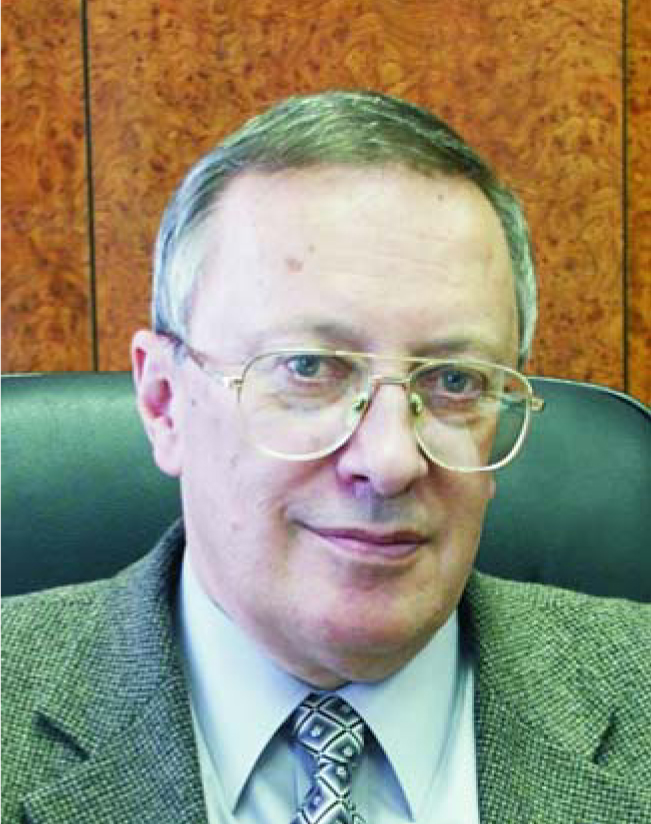Alexander Leonidovich Suvorov
DOI: 10.1063/1.2186293
Alexander Leonidovich Suvorov died unexpectedly at his home in Moscow on 18 June 2005. Known affectionately as Sasha by his many friends, colleagues, and students, Suvorov spent his entire scientific career at the A. I. Alikhanov Institute of Theoretical and Experimental Physics (ITEP) in Moscow, most recently as its director. A brilliant condensed matter experimentalist, he made important contributions to our understanding of radiation-damage physics, surface physics, and reactor materials science.
Suvorov was born in Sverdlovsk, USSR, on 15 November 1943; both his father and his grandfather were distinguished Soviet physicists. He began work at ITEP as a laboratory assistant in 1960, and the following year he entered the Moscow Engineering Physics Institute (MEPI), the Soviet Union’s so-called Atomic University. He received his engineering diplom in 1967 and kandidat degree (equivalent to the US PhD) in 1970, both in experimental physics from MEPI, and he was awarded the degree of Doctor of Physics and Mathematics in 1983.
After graduating from MEPI in 1967, Suvorov returned to ITEP, where he rose steadily through the ranks from engineer to deputy director for scientific work. He was appointed director of ITEP on 1 December 2001, and was elected chairman of the ITEP’s scientific and technical board in 2004. Suvorov was appointed to the faculty of MEPI as a professor in 1993, and until 2003 he held the Number 38 Branch Chair in Physics of Superconductivity and Nanostructures. In 2003 he organized and headed the Number 60 Chair in Radiation Physics of Condensed Matter at MEPI.
Suvorov served as thesis adviser for seven kandidat students at MEPI. He was elected chairman of the Russian Academy of Sciences’ science board for the radiation physics of solids, was a member of the scientific and technical board of Rosatom (formerly the Ministry of Atomic Energy), and was a member of the MEPI board of doctors.
As one of the pioneers of field-ion microscopy analysis, Suvorov created and developed at ITEP an independent research program: field-ion microscopy of radiation effects on the surface and in the bulk of solids. With a team of coworkers that he assembled, he obtained a significant number of fundamental scientific results related to the formation and behavior of primary radiation-induced defects in solids (metals, alloys, semiconductors, and high-temperature superconductors), the development and evolution of atomic collision cascades, the propagation of series of focused atomic collisions, the sputtering of surface atoms, and subthreshold effects. Suvorov published three monographs, two popular-science books, and many review articles. He was the author or coauthor of more than 190 scientific articles in the technical literature, and he received 36 invention certificates and patents, including several foreign patents.
Most recently, Suvorov introduced new modern methods of tomographic atomic-probe, scanning tunneling, and atomic-force ultramicroscopy at ITEP. Those methods have been successfully used to investigate various surface and subsurface radiation effects in solids and to study and identify biological molecules and, in particular, viruses.
First as deputy director and then as director of ITEP, Suvorov tackled with great energy and tenacity the myriad problems facing science in Russia today. His work as director was particularly crucial during the difficult period of science reforms in Russia following the collapse of the Soviet Union. He was especially effective in seeking national and international collaborations to move ITEP forward and to gain recognition for the institute’s talented scientists and their contributions.
Suvorov gave 40 years of his life to the institute, its development, and its activities. He was more than a prolific and talented researcher and a pioneer of one of the most promising trends in science—he was also a warm, generous, tactful, and responsive person. An unfailing optimist with an enormous appetite for work, he inspired everyone around him. He was also extremely proud of his family and took great pleasure in simple family activities. We have lost a great scientist, an inspiring teacher, a stimulating colleague, a caring man, and a dear friend. Sasha will stay in our memories forever.


More about the Authors
Yuri G. Abov. 1 A. I. Alikhanov Institute of Theoretical and Experimental Physics, Moscow.
Boris N. Goshchitskii. 2 Institute of Metal Physics, Ekaterinburg, Russia .
Celia M. Elliott. 3 University of Illinois, Urbana-Champaign, US .
Alexander G. Zaluzhnyi. 4 A. I. Alikhanov Institute of Theoretical and Experimental Physics, Moscow.




